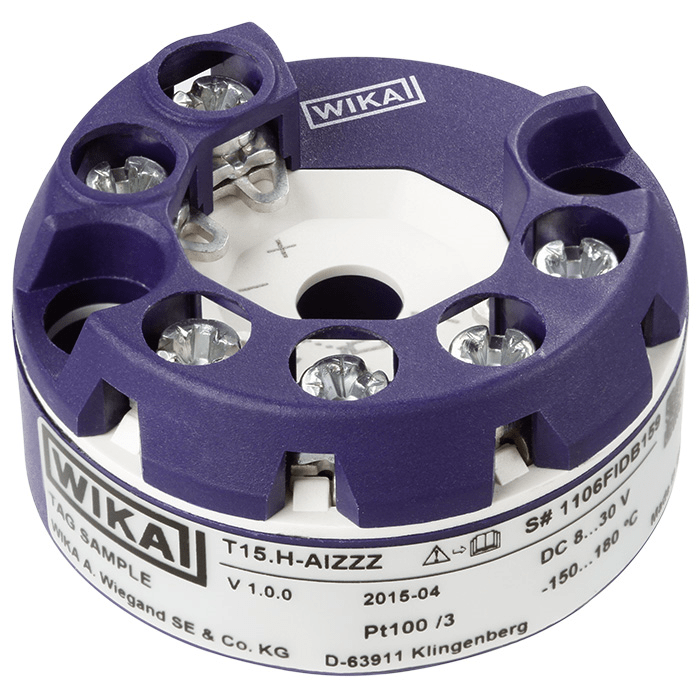Temperature transmitters convert the temperature-dependent change in resistance of resistance thermometers or the temperature-dependent change in voltage of thermocouples into a standardised output signal (e.g. 0 ... 10 V or 4 ... 20 mA). With these standardised signals, measured temperature values can be transmitted easily and reliably.
Until the introduction of the temperature transmitter, the raw measured values of the sensor were only transmitted to the control room via cable and then converted and processed there. These days, this form of transfer is only used in specific cases, for example, if the ambient temperature is too high or the installation situation is too restricted. For tasks of this type, rail-mounted transmitters also offer a solution. In almost all standard applications, however, head-mounted transmitters have prevailed
A further feature of the modern temperature transmitter is the diagnostic functionality: The instrument not only measures the value from the sensor and converts it into the desired temperature unit, it also checks many relevant parameters in the background, e.g. lead resistances, the internal electronics temperature and the supply voltage. If errors occur, the temperature transmitter immediately sends a corresponding signal. In this way, errors such as sensor breaks and short-circuits, effects of the lead and, when using dual sensors, even the drift of a measured value can be detected.


